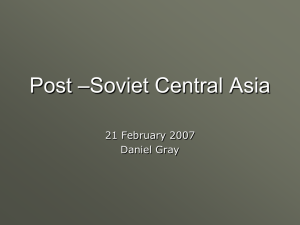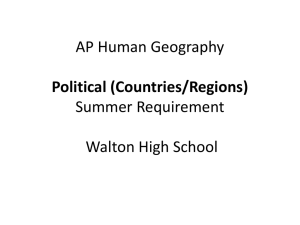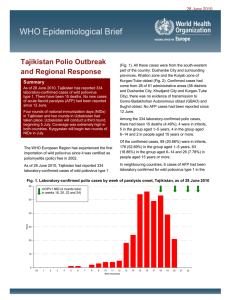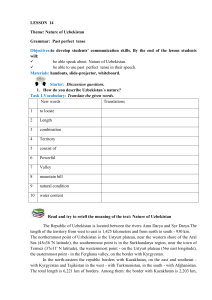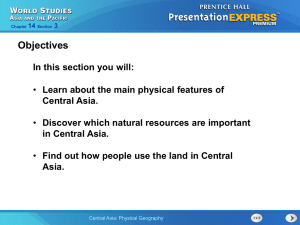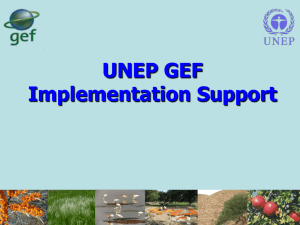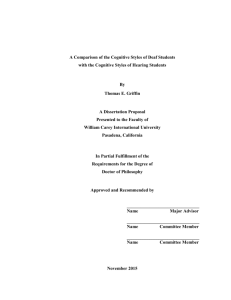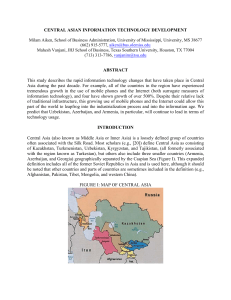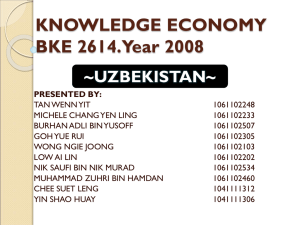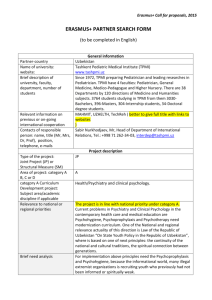Presentation - Devpolicy Blog from the Development Policy Centre
advertisement
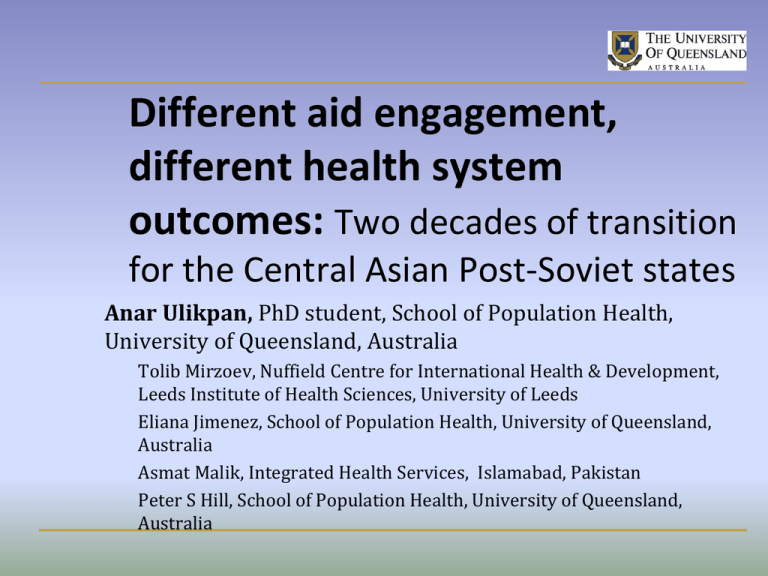
Different aid engagement, different health system outcomes: Two decades of transition for the Central Asian Post-Soviet states Anar Ulikpan, PhD student, School of Population Health, University of Queensland, Australia Tolib Mirzoev, Nuffield Centre for International Health & Development, Leeds Institute of Health Sciences, University of Leeds Eliana Jimenez, School of Population Health, University of Queensland, Australia Asmat Malik, Integrated Health Services, Islamabad, Pakistan Peter S Hill, School of Population Health, University of Queensland, Australia HISTORICAL BACKGROUND CRICOS Provider No 00025B Single country dominance Collapse of the Soviet Union Methods Documentary Review: • • • • Extensive document review (English, Russian, and Mongolian) Pubmed, Scopus, ProQuest and Google Scholar Institutional websites (ODI, WHO, WB, UN agencies) Grey literature Key informant interview: • In-depth interviews were conducted with 11 key informants with experiences in Kyrgyzstan, Mongolia and Uzbekistan Participatory observations: • Two authors 10-12 years experience in participating in the policy development process in Mongolia and Tajikistan • Least studied (0.16-1.71 publn/100.000 popn) • Language barrier • Overlooked by international community Limitations • Few published evidences • Limited access to study countries information • Key informants: secondary source Health sector in crisis during 1990s • Sharp fall of GDP by 4060% (except Uzbekistan as 15%) • Health spending fall to 1.1%-3.4% as percentage of GDP • Key health indicators declined • Introduction of social health insurance and user fees • Profound “revolution” at every level of the system • Arrival of new donors (financial, technical, policy support) From single country dominance to Multi-actor relationship Kazakhstan Kyrgyzstan Mongolia Tajikistan Turkmenistan Uzbekistan South Korea Net ODA received per capita in selected Post-Soviet Central Asian countries Uniqueness of aid relationship • Not too many donors • New as an aid recipient • No longstanding culture of aid coordination Differing paths and destiny Kyrgyzstan Mongolia Tajikistan Turkmenistan Uzbekistan Geopolitics play • Rich natural resources • Geo-strategically favourable position between the three giants These countries are neglected in development discussions despite their growing inequality in health and poverty Where to from here? • New aid relationships offer new opportunities for both donors and recipients • Fewer partners do not necessarily mean less fragmentation Where to from here? • Aid modalities must reinforce ownership and sustainability • Always consider factors beyond the health
